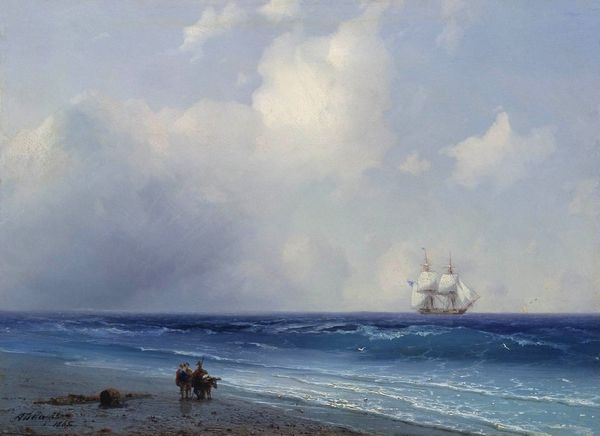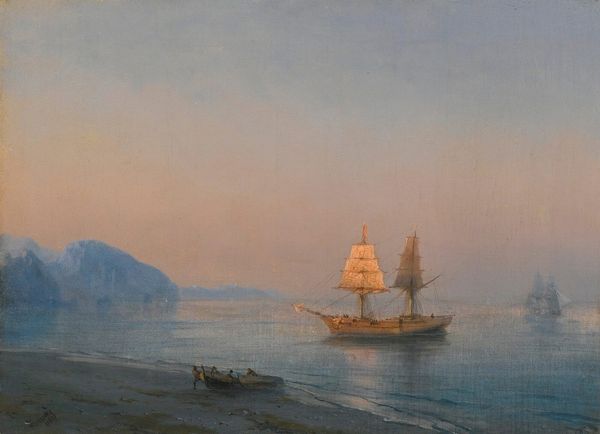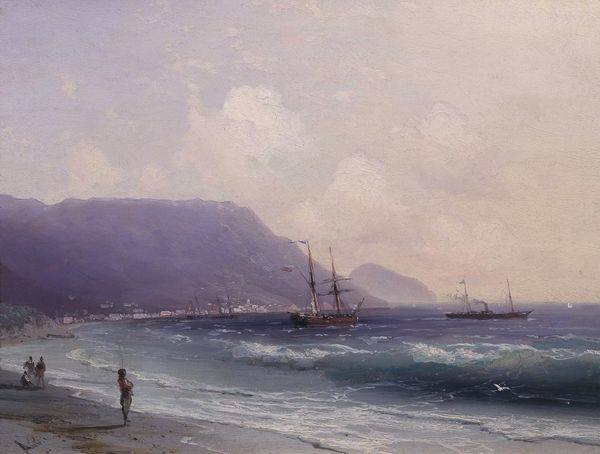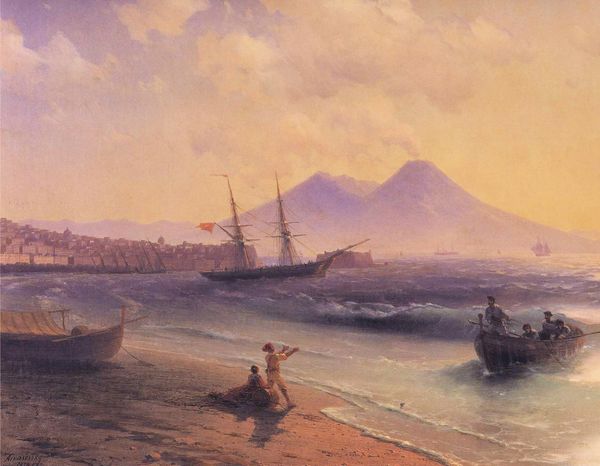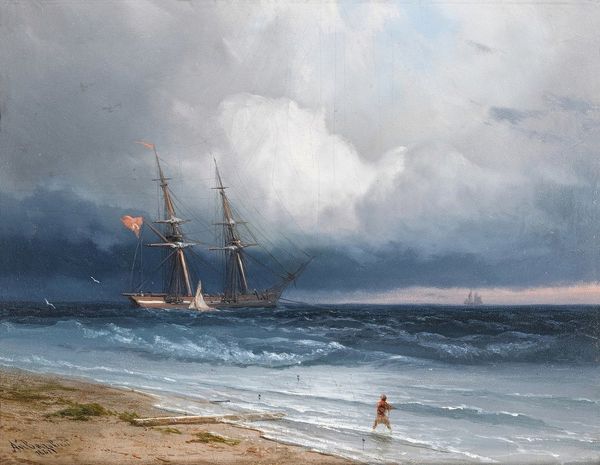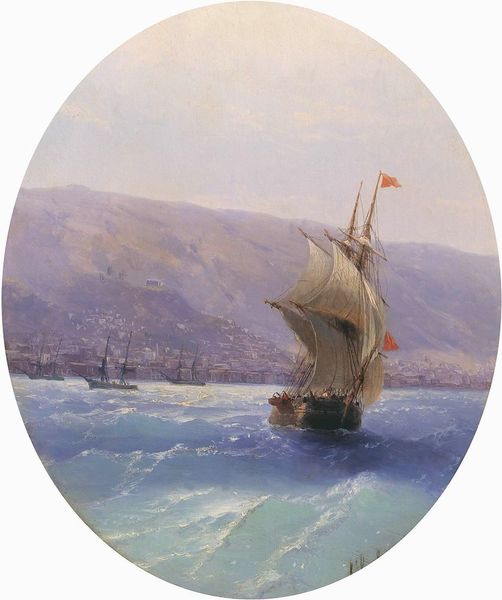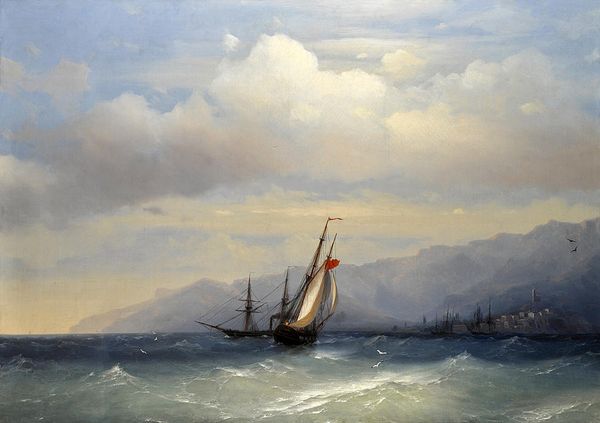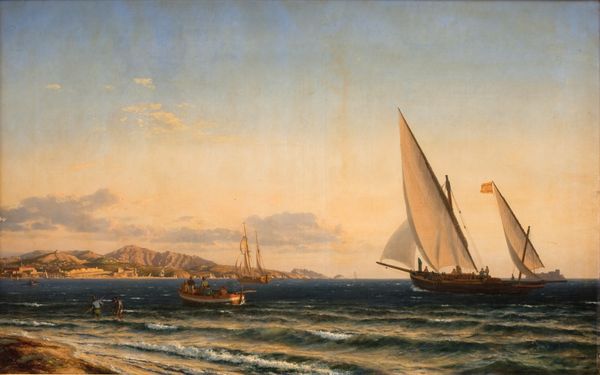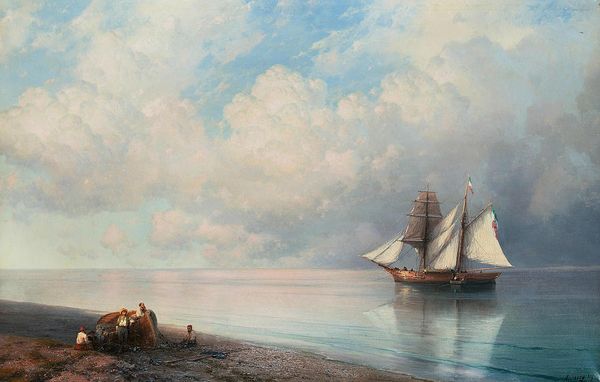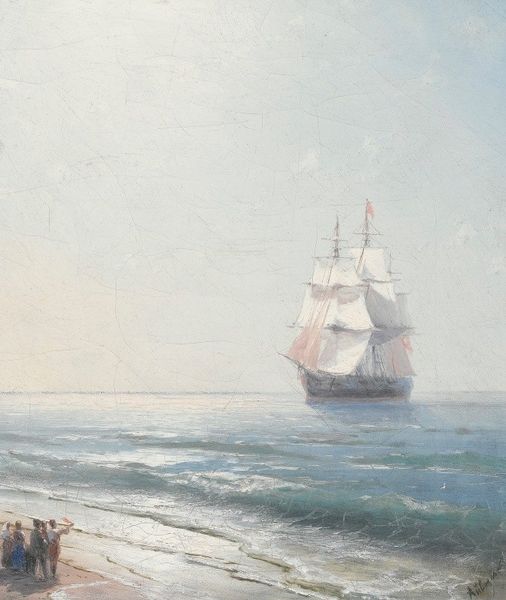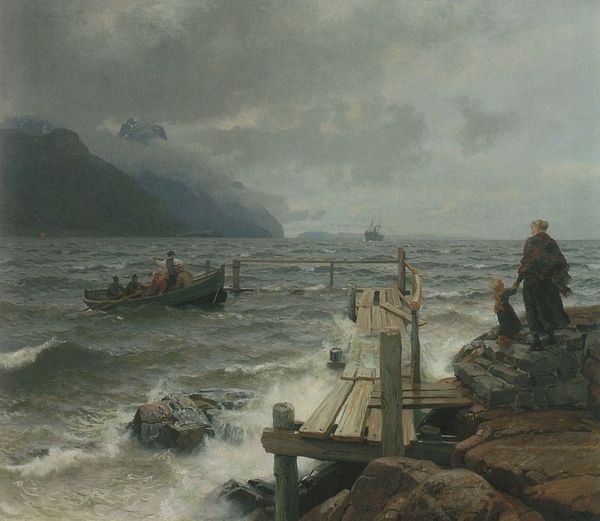
painting, oil-paint
#
boat
#
ship
#
painting
#
oil-paint
#
landscape
#
oil painting
#
ocean
#
romanticism
#
mountain
#
seascape
#
water
#
line
#
history-painting
#
sea
Copyright: Public domain
Editor: Okay, next up we have “Rush,” an oil painting of a seascape, purportedly by Ivan Aivazovsky. The scene is dominated by rough seas, and what looks like a horse-drawn cart by the shore, dwarfed by two distant battleships on the water. What grabs your attention in this piece? Curator: The painting draws my focus toward its representation of maritime labor and industry. Note how the rough brushstrokes don't just depict the waves; they depict the precarity of maritime work. Editor: The "precarity of maritime work?" That's an interesting interpretation. Curator: Absolutely. Aivazovsky, celebrated as a court painter, reveals, or perhaps obscures, the connection to labour. How were these materials sourced and for whom was the artwork produced? Editor: So, the physical making of the work itself— the canvas, the oil paint— and the labour involved are key here? The history embedded in each material choice? Curator: Precisely. Aivazovsky benefits from imperial support and his legacy hinges upon these conditions of production and consumption. Where are we without it? Editor: So, in some ways, a painting like "Rush," however picturesque, offers a glimpse into the socio-economic system of its time? Curator: It offers a calculated construction that cannot ignore material and labor networks that are fundamental. Look closely and tell me what labour this image attempts to efface? Editor: I hadn't considered it that way, honestly. Thanks for pointing that out. This gives me a whole new framework for how to view this work. Curator: Indeed. Keep these processes in mind.
Comments
No comments
Be the first to comment and join the conversation on the ultimate creative platform.
